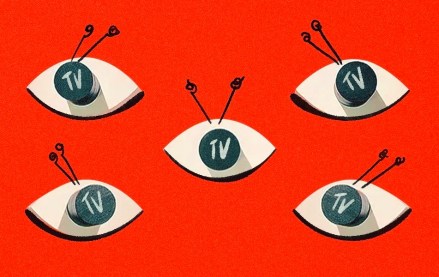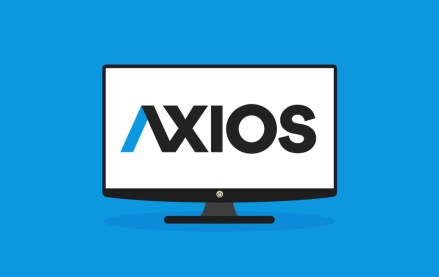‘We want to take as much money out of TV as possible’: DAZN details bid for ad budgets
Niche OTT service for sports DAZN is looking to find its niche in advertising with the launch of an ad business that wants to pull as much money from TV as possible.
The broadcaster has been quietly testing different variations of advertising in key markets Italy, Germany and Japan since November. In Italy, for example, where DAZN is the only place that soccer fans can watch 114 matches of the country’s top league, ads for Volkswagen are shown during those matches. In Germany, ad breaks rotate between four brands during streams, whereas in Japan branded content by games developer Konami is used instead.
The soft approach has left DAZN reliant on a “fairly clunky” process, said Stefano D’Anna, EVP of media at DAZN, who said all test ads are placed by his team. None of those placements are bought in an automated fashion nor are they addressable, with measurement revolving around audience numbers that are signed off by DAZN. Getting those numbers squared off by an independent verification is not possible either.
From summer, however, the pitch will become more robust. “We’ll scale our ad delivery plans from August and September onwards,” said D’Anna.
In the intervening months, he expects to have an ad server in place following talks with vendors that will eventually allow DAZN to manage and target ads that have been sold directly to advertisers. As it stands, there are no immediate plans to sell DAZN’s ads programmatically, with D’Anna reluctant to cede too much revenue to ad tech intermediaries from the outset.
“We’re not going to become an entirely digital property and have ad exchanges plugging into our technology,” said D’Anna. “I would always want our pitch to err toward us having the relationship with brands. We have a premium environment where we can evolve those relationships on a bespoke basis.”
Going direct to advertisers is not a scalable proposition in a broadcast market that in many ways is going the other way, further toward programmatic.
“Eventually we’ll have to look at other ways of driving revenue from ads, which may mean a combination of direct and programmatic revenues,” he added. D’Anna’s apprehension stems from the fact that broadcast VoD has been prime real estate for years and continues to grow as more money flows back into TV thanks to addressable formats.
“I don’t disagree that more sponsorship budget is moving into digital — and that’s something we’ll look at — but we have a slightly different approach because of the audience we have,” said D’Anna. “We want to move as much out of TV over to our business as we can.”
DAZN is an OTT player built mainly on second-tier sports that are followed by smaller groups of fans. Furthermore, it own rights to some top-tier sports like the Premier League, Champions League and the NFL in key markets Italy and Germany. It’s an intriguing proposition for advertisers at a time when discussions in sports marketing are more concerned with how to activate a smaller number of people, who are really engaged with the property, are going to talk about and share the asset. The OTT service rarely shares subscriber data, though D’Anna said it was on track to hit internal forecasts, and in some markets is surpassing them.
“Sports audiences are traditionally older, and yet DAZN is getting a slightly younger, mainly male contingent, who are quite difficult to reach via traditional TV,” said Richard Broughton, research director at Ampere Analysis. “That’s a valuable audience of fans who can be more profitable than your average sports viewer.”
DAZN’s focus on ad budgets is emblematic of how hard it is to build an OTT business with staying power. Subscriptions will continue to drive the bulk of the business, but the margins to be gained from something as profitable as sports advertising could be a fillip in the long run.
Like other media upstarts, DAZN will be looking to break even over a three-to-10-year trajectory, while simultaneously having to spend big on rights and marketing. So far this year, it has already had to fork out for Moto GP rights in Germany, soccer influencers and tennis rights in Brazil, sponsorship deals with superstar soccer star Neymar da Silva Santos as well as lock in a deal with boxer Gennady Golovkin. Anything that adds 5 to 10 percent to the company’s bottom line like ad budgets could alleviate some of those costs, said Broughton.
Advertising could also help offset growing competition for subscribers. It costs a lot for OTT services to acquire new subscribers now than it did a year ago, as Netflix has found. Between 2013 and 2015 the cost of adding subscribers in the U.S. was $60 for Netflix, per Ampere Analysis. Now, Netflix spends between $100 and $140 on every net new subscriber it acquires.
DAZN’s commercial charge will come under the banner of DAZN Media, the replacement sales house for Perform Media that will oversee strategies for sites including Goal.com and Sporting News. As part of the overhaul, DAZN+ has also been created to sell online ad inventory across its sites.
More in Future of TV

Future of TV Briefing: Media Rating Council identifies ‘the problem of our time’ for measurement
This week’s Future of TV Briefing looks at how the industry’s measurement arbiter is looking at ensuring measurement systems are able to reliably identify audiences across channels in a privacy-compliant manner.

Future of TV Briefing: Making sense of the TV industry’s latest measurement moves
This week’s Future of TV Briefing looks at the recent developments in the TV measurement market on the eve of this year’s upfront negotiations.

Future of TV Briefing: How Axios Entertainment is looking to expand its original programming business
This week’s Future of TV Briefing looks at how Axios’s entertainment division has its eyes on moving physical production in-house and getting into scripted programming.





